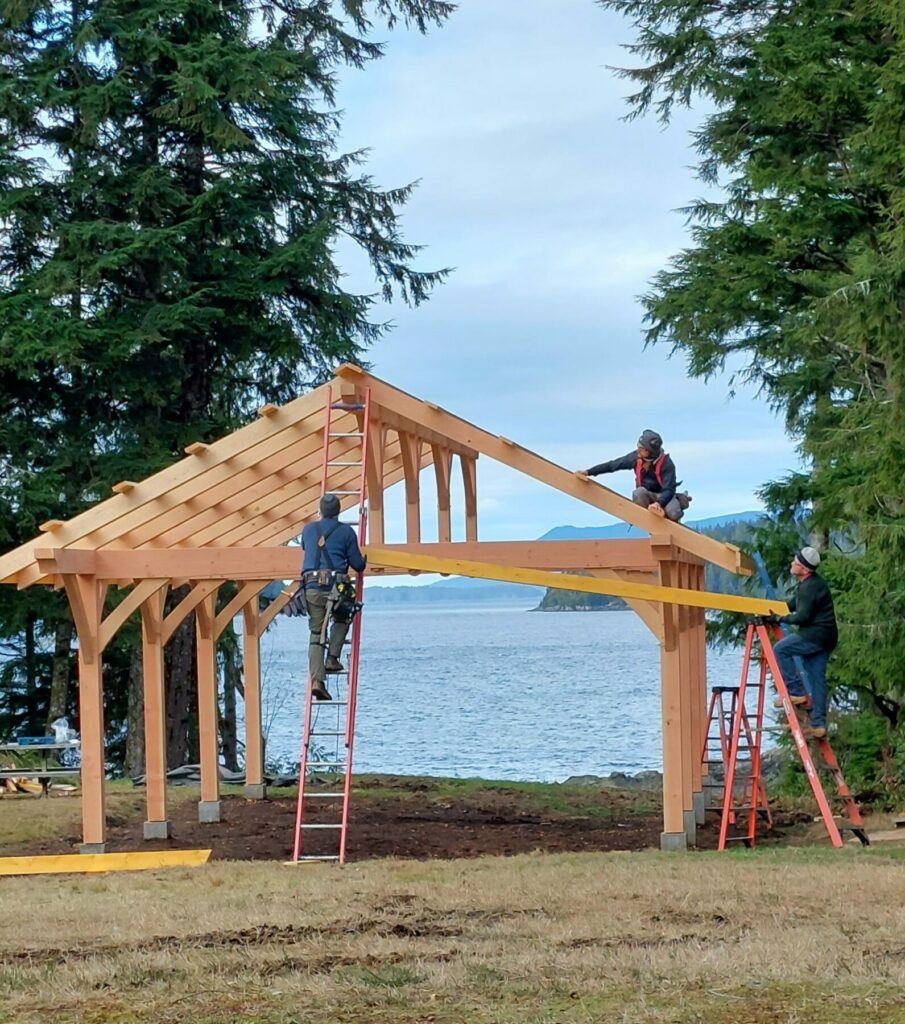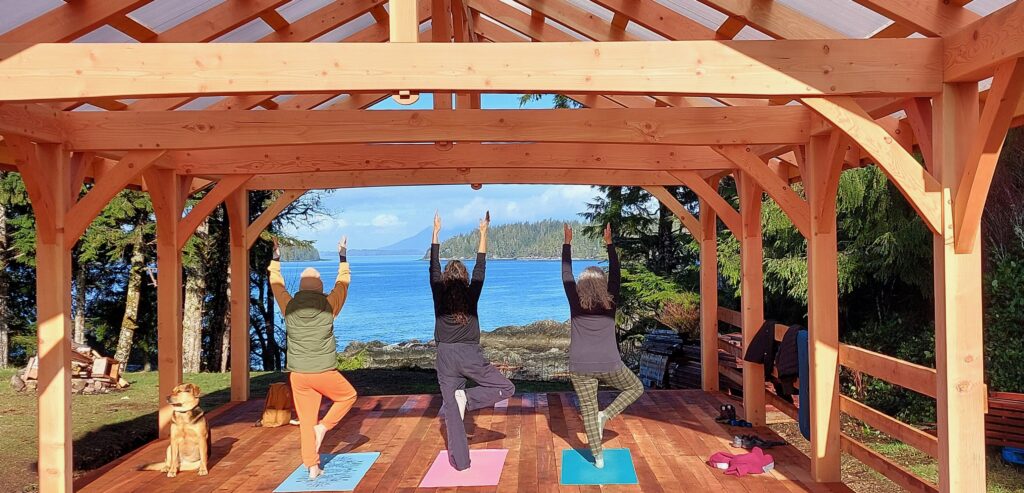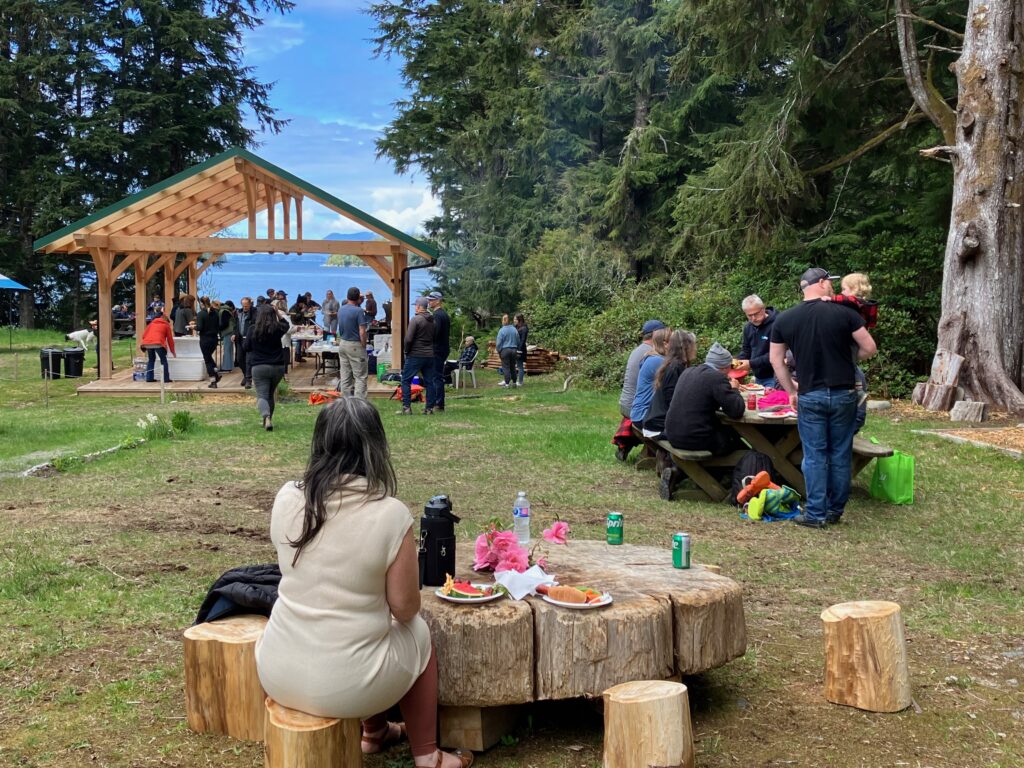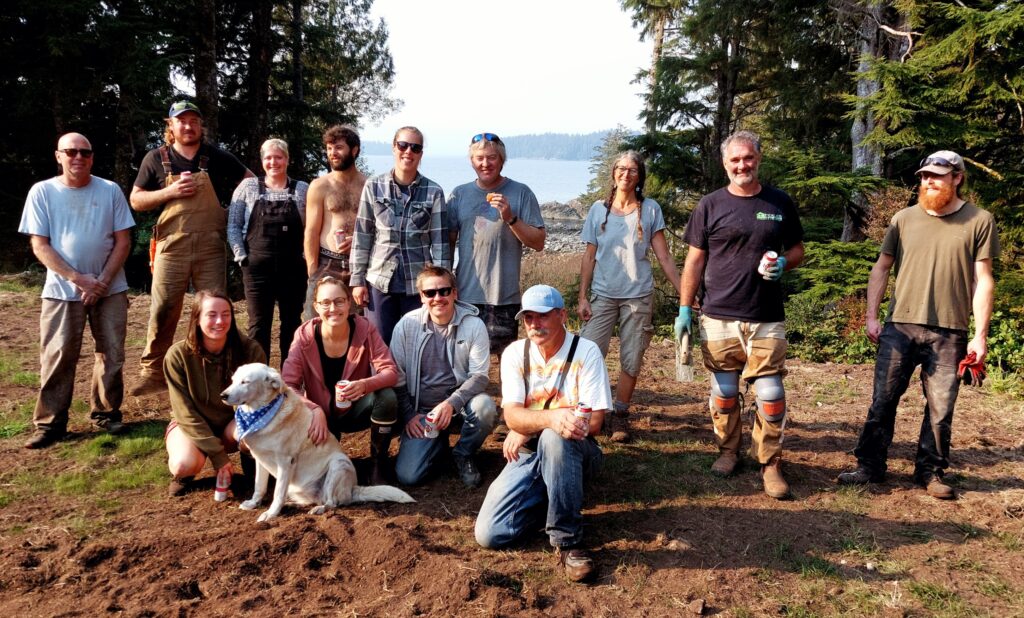It began as a meeting in June 2012 with 15 community members from across Bamfield coming together at a local community member, Lars Mogensen’s, house. Their goal was to solve a longstanding issue: How to make Bamfield West Park, a park located near the general store and government dock, a more enticing and vibrant area? A place where locals and newcomers alike would come together for a festival, a yoga class or even just to relax and enjoy the spectacular natural beauty that bestows this small remote west coast town?
A shared solution came forward to build a pavilion – a meeting hub that could comfortably and securely host a limitless array of activities that, especially in a post-pandemic era, would invite people to safely gather outside. But the looming issue on everyone’s mind became one of money. How or from whom could this be financed?
As with many grassroots, community-led initiatives that are pulled together through little more than strong vision and sheer determination, Bamfield community members got creative.
“With no money, we tried in vain for many years to secure funding,” says Andrea Butler, lead on-the-ground hand for the project. “One day we were asked to consider working with UBC students to create plans for our park. Blending the community’s special wishes and desires, based on our history geography culture, and diversity, the students drafted a plan. We held a GoFundMe drive during this time.”

By chance, 4VI representatives were touring Bamfield during the UBC students’ site visit and learned of the community’s idea. They encouraged the group to apply to Island Coastal Economic Trust’s Community Placemaking Program, an initiative to create and foster more welcoming, safe, and engaging public spaces. Their project fit the bill and over the following few months, work got underway.
“We worked with the Bamfield Parks Commission and the Alberni Clayoquot Regional District to acquire permitting to build the most beautiful post and beam pavilion possible and to locally source as much material and labour as possible,” says Andrea. “Twenty volunteers showed up to help hand pour the footings… and the pavilion was built and eventually arrived by boat in pieces to assemble by Pickles Timber Frames a local island company.”
Aside from the pavilion, whose decking is made from local red cedar logs harvested by Bamfield Huu-ay-aht Community Forest and shipped via the Lady Rose Marine Services, there is a forest adventure pod, a living path, an inviting colourful set of new steps, as well as six interpretive signs.
“The community has already successfully hosted events at West Park and we have more planned for the future,” says Andrea.

Since March 2023, there have been a wide variety of special events, festivals, and community gatherings at the park. From yoga practices three times a week at the pavilion which (as Andrea points out) was so popular there is loads of potential for more to be added; two large community events (a community barbecue hosted by the Bamfield Chamber of Commerce, and the first-ever Pride Parade, organized by the Bamfield Community School Association); a music night in July and a movie night in August. There are also plans to hold the opening day of the Fungus Festival there in September.
“This project brought so many groups in the regional district together, including the Bamfield Parks Commission and volunteers, Bamfield Community Affairs, UBC, Bamfield Huu-ay-aht Community Forest, and the Huu-ay-aht First Nation to create a public space that we could all be proud of,” says Andrea. “While it was challenging to have many groups work together and not be able to have in-person team meetings, miscommunications and duplications in work did occur over the time of the project. But, in the end, these partnerships and the relationships created will be long lasting and prove to be valuable as the community of Bamfield continues to grow and develop.”

On the coattails of this project have come many other new opportunities for the community to utilize the public space. With improved access to the park with the project, construction of new stairs, and additional signage to help with navigation to the pavilion, parkland, and trails. The community has seen an incredible increase in use by more than 100-fold or 1000%. The users are both residents and visitors to the park and adjacent green space.
“This style of outdoor infrastructure is not available at any other public or private space on the West Side of Bamfield,” says Jan Teversham, Secretary of Bamfield Community Affairs. “It really allows people to escape the crowds of the boardwalk and enjoy the incredible West Coast nature that attracts so many to our island communities.”
The pavilion has, in the words of community members themselves, truly transformed the parkland.

“The addition of infrastructure has changed the possibilities for economic opportunities in West Bamfield,” says Christine Gruman, Manager of National Resources and Trade for the Huu-ay-aht First Nations.
Future plans for the community include working towards active transportation, as the Huu-ay-aht First Nations and Alberni-Clayoquot Regional District consider connecting the park to the trail system. A project is currently underway, led by the Huu-ay-aht Community Forest, to create a 5-kilometre pathway through the community forest, adjacent to Huu-ay-aht Treaty Lands, linking West Bamfield to East Bamfield, which will bring even more demand for the West Bamfield Park.
Revitalizing this space seems to have offered ample opportunities for visitors and locals, both for today and well into the future.
###
The Revitalization of Bamfield’s West Park project was supported with a 100% strategic investment of $50,000 through the Trust’s Community Placemaking program and in partnership with 4VI. The project duration was from March 2022 to May 2023.